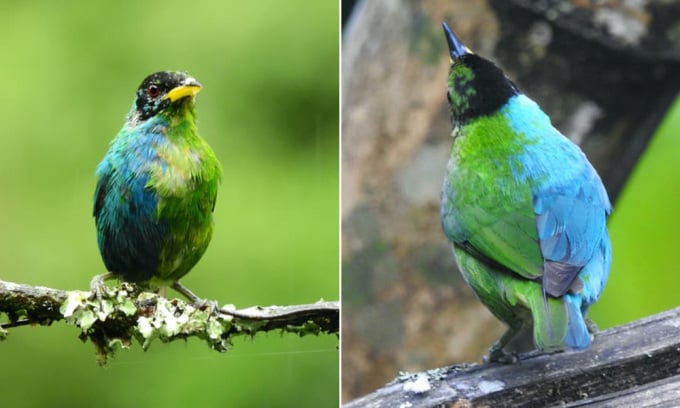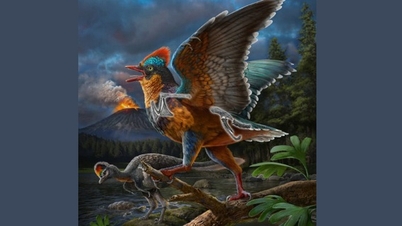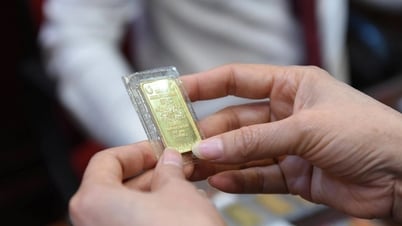Colombia Experts came across a bird with the right half of its body colored blue, typical of a male, while the left half was green like a female.

The hermaphrodite bird comes in two colors, green and blue. Photo: John Murillo
Chlorophanes spiza is a species of passerine bird ( Passeriformes ), the female has green plumage, while the male is blue. However, amateur ornithologist John Murillo photographed a special Chlorophanes spiza bird in the city of Caldas, Colombia, New Atlas reported on December 12. The right half of the animal is blue while the left half is green. From October 2021 to June 2023, people also encountered the animal many times at a station providing fresh fruit and sugar water for local birds.
Murillo contacted Professor Hamish Spencer, a zoologist at the University of Otago, about the unusual bird. Spencer went to observe and study the creature himself. The new study was published in the Journal of Field Ornithology .
The bird in Murillo's photo is a rare example of bilateral hermaphroditism, in which one side of the organism exhibits male characteristics and the other side exhibits female characteristics. This phenomenon occurs in many animal groups, especially those that are sexually dimorphic (the sexes differ significantly in appearance). In birds, the cause is thought to be a malfunction in the division of the egg, which then results in double fertilization with two separate sperm.
The Caldas bicolor is only the second recorded case of bilateral hermaphroditism in the species Chlorophanes spiza . The previous case, recorded in 1914, had the animal blue on the left and green on the right.
Since the Caldas hermaphrodite was not captured, experts cannot tell whether it has internal organs of both sexes. This possibility is possible because when studying some other birds with bilateral hermaphrodites, they found that they had ovaries on one side and testicles on the other.
Most of the observed behavior of the Chlorophanes spiza bicolor appears to be relatively normal, although it tends to avoid other dioecious birds, and they do avoid it. Spencer said that some of these bicolors breed, while others do not. The Caldas bicolor has never been seen in pairs, so Spencer speculates that it may not breed.
Thu Thao (According to New Atlas )
Source link


![[Photo] Prime Minister Pham Minh Chinh receives Swedish Minister of International Development Cooperation and Foreign Trade](https://vphoto.vietnam.vn/thumb/1200x675/vietnam/resource/IMAGE/2025/5/12/ae50d0bb57584fd1bbe1cd77d9ad6d97)

![[Photo] Prime Minister Pham Minh Chinh works with the Standing Committee of Thai Binh Provincial Party Committee](https://vphoto.vietnam.vn/thumb/1200x675/vietnam/resource/IMAGE/2025/5/12/f514ab990c544e05a446f77bba59c7d1)
![[Photo] Prime Minister Pham Minh Chinh starts construction of vital highway through Thai Binh and Nam Dinh](https://vphoto.vietnam.vn/thumb/1200x675/vietnam/resource/IMAGE/2025/5/12/52d98584ccea4c8dbf7c7f7484433af5)































































































Comment (0)